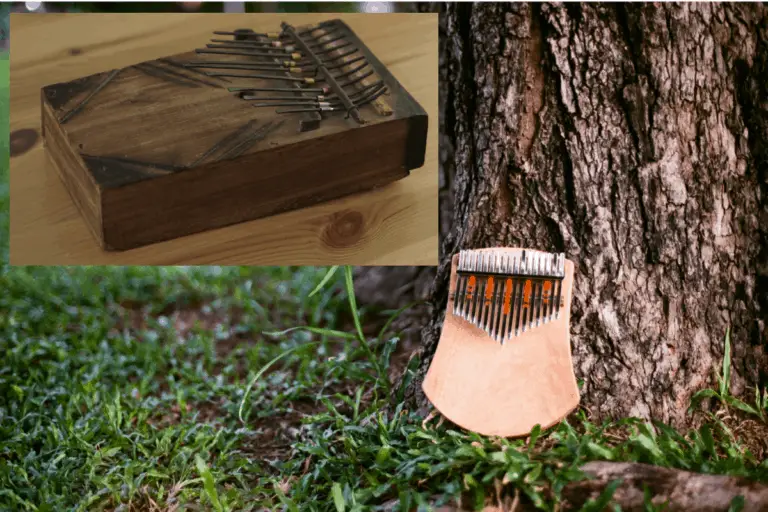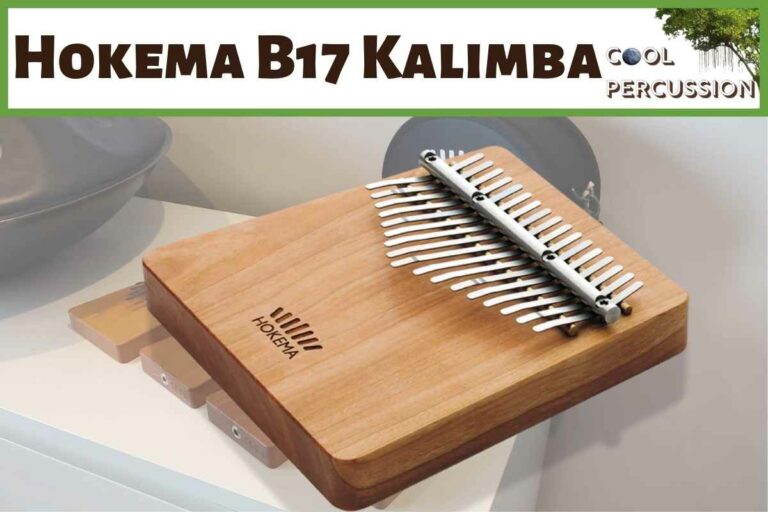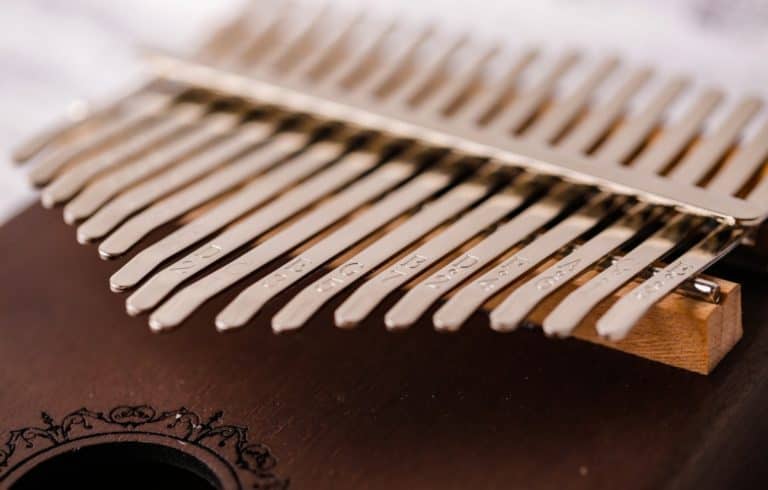STOP: Why is My Kalimba Buzzing? (How to Fix a Buzzing Kalimba)
You’ve begun to improve your Kalimba playing and things are beginning to sound sweet, but all of a sudden a buzzing sound has introduced itself. The Buzz is distracting at best, and ruining your Kalimba playing at worst. So what is causing the Buzz on your Kalimba and how can it be fixed?
Kalimba buzzing occurs because of an issue between the tines of the instrument and the bridge upon which they vibrate. The smallest piece of debris can imbalance the connection between the two pieces of metal and cause a small audible vibration that sounds like buzzing.
There are other sound issues you can have with your Kalimba that will not be Buzzing. There could be issues with stiff tines, dead tines, or even blank, non-resonating tines.
Join me as I go deeper into fixing all of these Kalimba sound problems with diagnosis techniques, fixes and more.
Reasons why a Kalimba May Buzz
Fortunately there are not many reasons why your Kalimba might be buzzing, so diagnosing the issue is usually quick. In cheaper kalimbas, the materials used may be inferior, in quality instruments, it may be a small amount of debris on the bridge.
- Dirty Bridge
- Worn Tine or Bridge
- Cheap Kalimba
How to Diagnose Buzzing on your Kalimba
Finding where the buzz is coming from on your Kalimba is a straightforward process.
- Find a quiet space
- Hold your Kalimba in the correct way for playing
- Play each tine in turn, slowly, letting it ring, listening carefully
- Make a note of one or more tines that ‘buzz’ when played
With any luck, you will find only one tine that creates a buzz when played. In Kalimbas that have not been played for a long time, or stored for any length of time where dust or dirt may have been introduced, you may have 2 or more tines buzzing. In this instance, it may be worth cleaning the Kalimba thoroughly, paying close attention to each tine, the bridge, and especially where the two meet.
Once complete, play each tine individually once again to see if any buzzing on a specific tine remains.
If you still can hear a buzz, move onto the 3 Kalimba buzzing tips below.
How to Stop a Kalimba Buzzing (3 Steps)
Before you are able to stop your kalimba buzzing, you have to identify where the buzz in coming from and where you will have to work to fix it.
99 times out of 100 it will be individual tines that are causing the buzz, or perhaps even a pair, but the bigger the kalimba model and the larger the number of times, the more places you have to look for it.
Thankfully it is not a hard job to find it, as you will only have to play each tine individually while listening carefully to find out which tine, or tines have the buzz.
Once you have found the guilty tine, you can then implement a few tactics to fix it an remove the buzz from your Kalimba playing.
1.Wriggle The Tine from Left to Right
Wriggle the tine left and right to se if there is somethign behind the tine causing a tiny gap between the tine and the bridge.
The chances are you will not be able to see what it is, it can be the smallest piece of dust sometimes.
Just take the tine, move it slowly left and right right, strighten it up again ensure ing you have gaps either side to the next tones and play again.
If the buzz has disappeared, you have fixed the buzz on your Kalimba.
2. Push the Tine up an down on the Bridge
If wriggling left and right has failed to eliminate the buzz on your kalimba try moving the tine up and down on the bridge, using your hammer.
Sometimes, when the left/right wriggling doesn’t work, this method will.
Once you have completed this movement, pay the tine cleanly again, listen carefully, and f the buzz has gone, you’ve solved the problem
You will of course have to ensure you get the tine back to the exact place to have it play the right pitch again as moving the tine up and down the bridge will affect that.
3. Place a small piece of paper between the bridge and tine where the two meet.
If you have completed the last two step and the buzz still remain on the identified tine, try slipping a small strip of paper behind the tine, moving it up and down, and side to side, paying particular attention to where the tine meets the bridge.
Test the tine out once again and if the buzz has gone, Well Done!
If the buzz remains, leave that tiny piece of paper in between the tine and bridge.
You may often see a Kalimba being played with one or more of these small pieces of paper placed between the tine and bridge. where multiple buzzing issues have been identified and rectified with this method.
It is not ideal but does work. It may be time to begin considering a new Kalimba if the problem persists, especially if it is one from the cheaper end of the market, where the material used in the construction may be more of the problem than dust and dirt.
My Favourite Kalimbas for Beginners
I own quite a few Kalimbas of differing sizes, keys, styles, and prices. I was somewhat addicted for a while! Anyway, having gone through quite a few when I first started getting interested, I have a couple of recommendations for you, if you are looking to buy your first, so you can try one out inexpensively and see if you want to take things further
Chances are, you’ll stick with one of these as you can learn and grow with them, which is why I’ve picked them out
Gecko Kalimba
This was the first-ever Kalimba I bought and it is the one I use the most today.
Because it is so gorgeous looking, I have mine on display in the office.
Hluru Board Kalimba
One thing that you might be slightly surprised about is that you can gain a richer sound from the board kalimba as opposed to the Box.
They are also a little easier to play if you do not have big hands because the depth is much shallower
More Kalimba Sound problems to Fix
There may be more than just a buzzing issue with your Kalimba.
Other common sound problems with Kalimba can inclue:
- Stiff Note
- Dead Tines
What are ‘Stiff’ notes on a Kalimba?
Stiff notes are most often found on the outermost tines, the shortest tines producing the highest pitches, and the far left or far right of the instrument.
When described as stiff, what is meant, is there is very little vibration in the tine, which in effect causes little to no resonance of the pitch of that tine. Instead, you will experience just the sound of the nail or thumb, dropping off the tine.
Another reason you may find the outermost tines a little stiff is if you have bought a very cheap Kalimba where the materials are not the best.
No matter what Kalimba you buy, you really need to have each and every tine ring out true, and produce no stiff or dead tones. You can work around the and try to play and find songs that don’t use those tones, but it is going to affect your overall enjoyment of playing this beautiful instrument, and that’s no good.
How to fix Stiff Tines on a Kalimba
- Retune the kalimba
- Replace with a longer tine
Sometimes, retuning the Kalimba to a different key by moving all the tines down, leaving a longer amount of tine below the bridge may work. Sometimes, the stiffness in cheaper Kalimbas come from the lack of length beyond the bridge.
Allowing more tine to produce playing a different key to the one the Kalimba was supplied with is a resolution, albeit not perfect. After all, You ought the Kalimba and the key it came in as that is what you wanted, maybe not this retuned one.
Dead Tines on a Kalimba
Sometimes, you will find dead tines on a Kalimba. This will affect your ability to play the instrument properly and you will need ot
How do you know a tine on your Kalimba is dead?
There is a difference between a stiff tine and a dead tine, the best way to understand the difference and identify which situation your tine/s are in is to watch this video.
It begins right at the point where she plays a dead tine. You’ll know instantly
The most common reason why you have a dead tine on your Kalimba is not the tine itself.
You may go through various ways of trying to fix the tine, which is usually towards the right or left of the key board.
If you have moved the tine, or even replaced the tine and found that it still sounds dated, the greater chance is that the quality of the board is actually he problem,
TIP: You will often find dead tines from the get-go when buying very cheap Kalimbas. I am afraid there is going to be no solution because the problem is not in the tine, but in the Kalimba board, the parts are set upon.
To prevent a higher chance of having dead tines, ensure you spend at least $30 on a Kalimba, even for beginners.
Why the buzz is sometimes OK in Africa and even encouraged
The kalimba, originating from the African Mbira will annoy a westerner when a buzz appears. As we have read above, finding and fixing the cause of the buzz on a Kalimba is something we want to address as soon as it happens.
This is often not the case for Kalimba and Mbira players in Africa, who will either welcome a buzzing instrument or introduce a method in which to make the instrument buzz.
It is suggested that the imperfect, unclear sound is a reminder of an imperfect past looked upon with fondness, and ‘noisy’ sounds add to the rawness of the music and its heritage.







